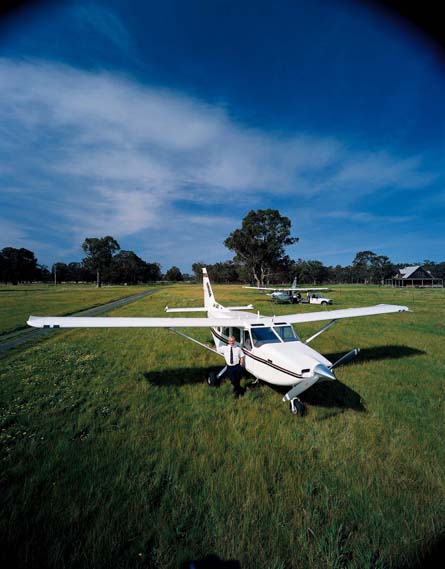When Indian conglomerate Mahindra & Mahindra bought Bangalore-based Plexion Technologies in 2006, it was mainly interested in the company's automotive engineering capabilities.
By chance, it also inherited Plexion's modest aerospace engineering practice - for which the Indian giant has pursued an ambitious development plan, buying a majority stake in Australian general aviation manufacturer Gippsland Aeronautics (GippsAero), component and assemblies company Aerostaff Australia, and a Boeing Aerostructures factory.
 |
|---|
© Mahindra AerospaceMahindra Aerospace added the eight-seater Airvan GA-8 to its portfolio after acquiring a majority stake in GippsAero |
"After the Plexion purchase, I spent a year studying aviation, and then, as a group, we realised that aerospace was the next big thing," says Arvind Mehra, executive director and chief executive of Mahindra Aerospace. "We conducted a study, and this pointed out that aviation makes a lot of sense, and that we should focus on two areas: aircraft and aerospace structures."
MAJORITY STAKES
Mahindra's ambitions took a big step forward in late 2009 with a plan to buy majority stakes in GippsAero and Aerostaff Australia for Rs1.75 billion ($38 million). The deal immediately added three aircraft to the company's portfolio - the two-seater GA-2, eight-seater Airvan GA-8, and 18-seater Airvan GA-18 (an update of the GAF Nomad). These joined the NM-5, a five-seater aircraft inherited in the Plexion deal and which is co-developed with India's National Aeronautics Laboratories.
As a newcomer to aerospace, Mahindra sees growth through acquisition as preferable to organic growth. "You cannot spend a lot of time developing three or four aircraft and getting them certified," says Mehra. "This would take for ever. We looked at various targets, and finally bought GippsAero in Australia, which gave us three aircraft on day one."
Of the company's four aircraft, the two most developed are the GA-8 and GA-18. Mehra estimates more than 300 of both types have been sold. About 140 GA-8s have been produced, mainly for use by tour operators and parachute clubs. The GAF Nomad was last produced in 1985, but Mahindra is conducting research among possible customers about what features to add in its reincarnation as the GA-18 twin-turboprop, high-wing, short-field take-off and landing aircraft.
"Most countries need aircraft that can operate out of unpaved runways and make short take-offs and landings," says Mehra. "All our aircraft can do this. We are still figuring out what the demand is for the GA-18. It is chicken and egg - what modifications do we need to make within an attractive price band? We are bringing it back to life, so we are surveying customers about what they want to see, but we believe there is a significant opportunity."
 |
|---|
© Mahindra AerospaceAbout 140 GA-8s have been produced, mainly for use by tour operators and parachute clubs |
The GA-2 is still being developed, and the NM-5 is likely to have its first flight in 2012.
Although the Aerostaff deal gave Mahindra the ability to produce components, it sees a bigger market in aerospace structures. Last year the company purchased decommissioned equipment from Boeing Aerostructures Australia. Awaiting shipment to Bangalore, the equipment will be used to produce metallic parts in a factory run by Mahindra and a joint venture partner that Mehra calls a "tier-one aerostructure maker". He says it will supply aerostructures to airframers once it becomes operational in 18 months.
Although both of Mahindra's businesses have grown through acquisitions, Mehra says the strategy for aerostructures differs from that for aircraft. "In aerostructures, our dream is to become tier one," he says. "As a pure component manufacturer, you can never be a tier-one supplier, only tier three or four. But if you reach assemblies or aerostructures quickly, then you become an integral part of aircraft manufacturers' supply chain."
Mehra sees Mahindra Aerospace becoming the Embraer of India, carving out a niche in a world dominated by big Western players. "Embraer grew out of a country with no aviation experience," he says. "They competed with Boeing and Airbus and made a space for themselves. Embraer is a beautiful story."
Source: Flight International
















